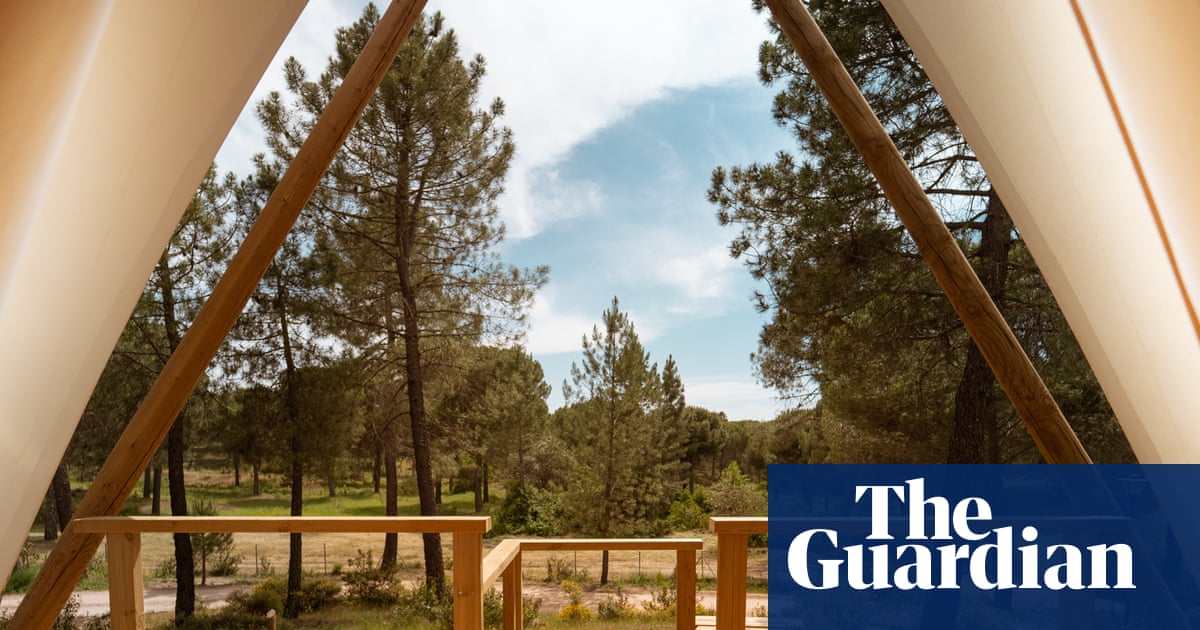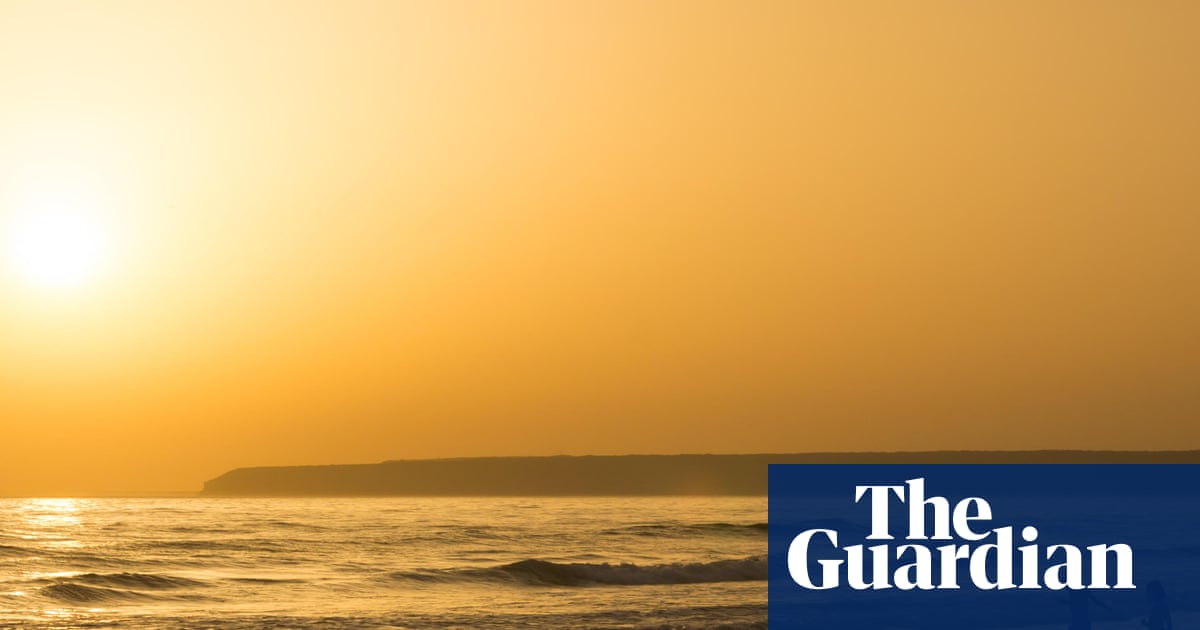The Spanish camping brand that’s big on nature immersion, cool design and creature comforts | Andalucia holidays
A few years ago, camping with friends, I watched in awe as Becky set up her pitch. While the rest of us were stringing out guy ropes on tents as glamorous as giant cagoules, she arrived with a bell tent, duvets instead of sleeping bags, sheepskin rugs and vintage folding chairs. For all the talk of breathability, practicality and “high performance” gear, it was Becky’s tent we all wanted to sleep in. In the years since, I have never quite achieved her level of camping chic – until this summer, when I discovered the innovative Spanish camping brand Kampaoh.
It all began back in 2016, when Kampaoh CEO Salvador Lora and his partner were backpacking in the Dominican Republic. One night they came across a campsite with pre-erected tents within which were mattresses and blankets. “We were in the middle of nature, surrounded by peace, and lacked nothing,” he tells me.
Back home in Spain, Salvador wondered if something like that could work there – and decided to experiment setting up a handful of tents in Tarifa. Today the company has 90 sites across Europe, most of them in Spain, but also in Portugal and Italy. Coming across the brand by chance when looking for somewhere to stay in Andalucía, I booked into Camping Los Villares, one of its showcase sites, in the hills above Córdoba.
Arriving in the golden hour, after travelling overland by train, Los Villares looks like a dreamy backdrop to a Sofia Coppola film. From the entrance, the land drops gently away to reveal avenues of cream-coloured canvas tents, the sun filtering through tall Aleppo pines.
Los Villares has a wide range of accommodation, from bell tents to vast, safari-style Bali tents, cute triangular Buka tents (with private, rustic-chic washrooms outside), Tiny Love cabins (with private baths with views), and Tiny Play family cabins (with a slide from their mezzanine bunks down to the living areas). My mid-range Anza is a lofty, triangular tent with a shower and toilet tucked behind the sleeping area and a raised, decked porch. The site is open year-round and the tents have air-conditioning and a small heater. There’s space for basic tent campers and a small campervan area, too.
Outside the school holidays, with the campsite’s restaurant closed midweek, dinner that first night is sliced tomatoes, olives and tortilla foraged from a nearby village shop. As I eat on the terrace, all is deeply peaceful – the wind twisting through pines, blue-tailed Iberian magpies resting on branches overhead.
Inside, my white, cream and wood tent is decorated with fairy lights and faux pot plants; the low platform bed (with proper mattress and pillows!) made up with white bedlinen. Plates, cups and cutlery are provided – and if I’d brought a pet, a mini version of the tent would provide a shady dog bed. An information sheet encourages me to tag @kampaoh on social media; arrival details had been sent via WhatsApp.
It’s perfectly designed to appeal to gen Z travellers, the experience-seeking, social media-canny cohort that are becoming the dominant demographic in travel. While aesthetics are important, blingy, performative luxury is not; conscious of overtourism and the need to prioritise wellbeing, they look for off-the-beaten-track outdoor stays where they can run, swim, surf and cycle, as well as social connection. If Kampaoh’s campsites ticked any more of the demographic’s boxes it would break TikTok.
“We wanted to bring back the magic of connecting with nature and outdoor adventures without giving up comfort or style,” says Lora. “The new generation love experiences like camping but they also have high expectations for design, comfort and aesthetics. Visual appeal isn’t superficial; it’s part of how we live and share our experiences.”
Kampaoh isn’t the only camping brand tapping into this market. In France, the Parisian hotel brand Touriste recently launched three stylishly revamped holiday parks under its Campings Liberté brand, while Huttopia, which began in 2000 with a small, nature-based campsite in the French Alps and a devotion to wood and canvas structures, now offers 152 sites in eight countries. Unlike other glamping providers, the aim is not to add on hotel-style frills, but to increase basic comfort. Setting themselves apart from big, pre-erected tent and cabin operators such as Eurocamp, operators like Kampaoh keep sites relatively small and, crucially, stylish.
As I sit on the restaurant’s terrace sipping coffee the next morning, shielded by fig trees, I watch a steady trickle of campers heading out for the day in hiking or cycling gear. It was 37C in Córdoba when I collected my hire car, but up here it’s a pleasant 26C. With the smell of hot pine needles in the air, I follow them out to explore.
after newsletter promotion
The campsite is in the Parque Periurbano Los Villares, a protected area of 484 hectares (2 sq miles) that’s peppered with bird hides, signposted botanical trails and picnic areas. The GR48 long-distance footpath goes through it, and a network of cycling routes around it. After hiking up to a viewpoint behind the park’s visitor centre to get my bearings, I drive to the small town of Santa María de Trassierra to walk the 20-minute path to the Baños de Popea.
Remote and jungly, this river pool was a favourite spot with Córdoba’s Cántico group of poets and artists in the late 1940s. The tumble of small waterfalls and pools – full from unusual spring rain – form a magical spot, reached through glades of bear’s breech (Acanthus mollis), and paths edged with beams of gorse-like French broom.I could easily spend all day here, but there’s still Córdoba to see, with its parks of orange trees, the shady gardens of the Alcázar de los Reyes Cristianos and the famous mosque-cathedral of Mezquita.
The highlight, for me, however, is the Medina Azahara archaeological site, just out of town. Its construction was started in 936 by the first caliph of Al-Andalus, Abd al-Rahman III. This palace-city saw service for only 70 years but its evocative ruins and richly decorated archways are a powerful reminder of its opulence. Walking the Medina’s ancient stones as grasshoppers hop and jasmine scents the hot air, it’s easy to see the appeal of this strategic location, between the mountains and the Guadalquivir River.
Driving into the campsite afterwards, off a road flushed with hot pink oleanders, the landscape is washed in pale gold. Momentarily distracted by the view, I double-take as four hoopoes suddenly appear in front of me, their black and white stripes backlit by the sun. I probably ought to have taken a photo and posted it with the hashtag #kampaohvibes. Instead, I keep very still and watch. Some experiences are still tailormade for us analogue Gen Xers.
The trip was provided by the Spanish Tourist Office, with support from Andalucía and Kampaoh, which is open all year. Anza tents at Kampaoh Córdoba cost from €63 a night for two people, or from €76 a night for four; both minimum two nights

